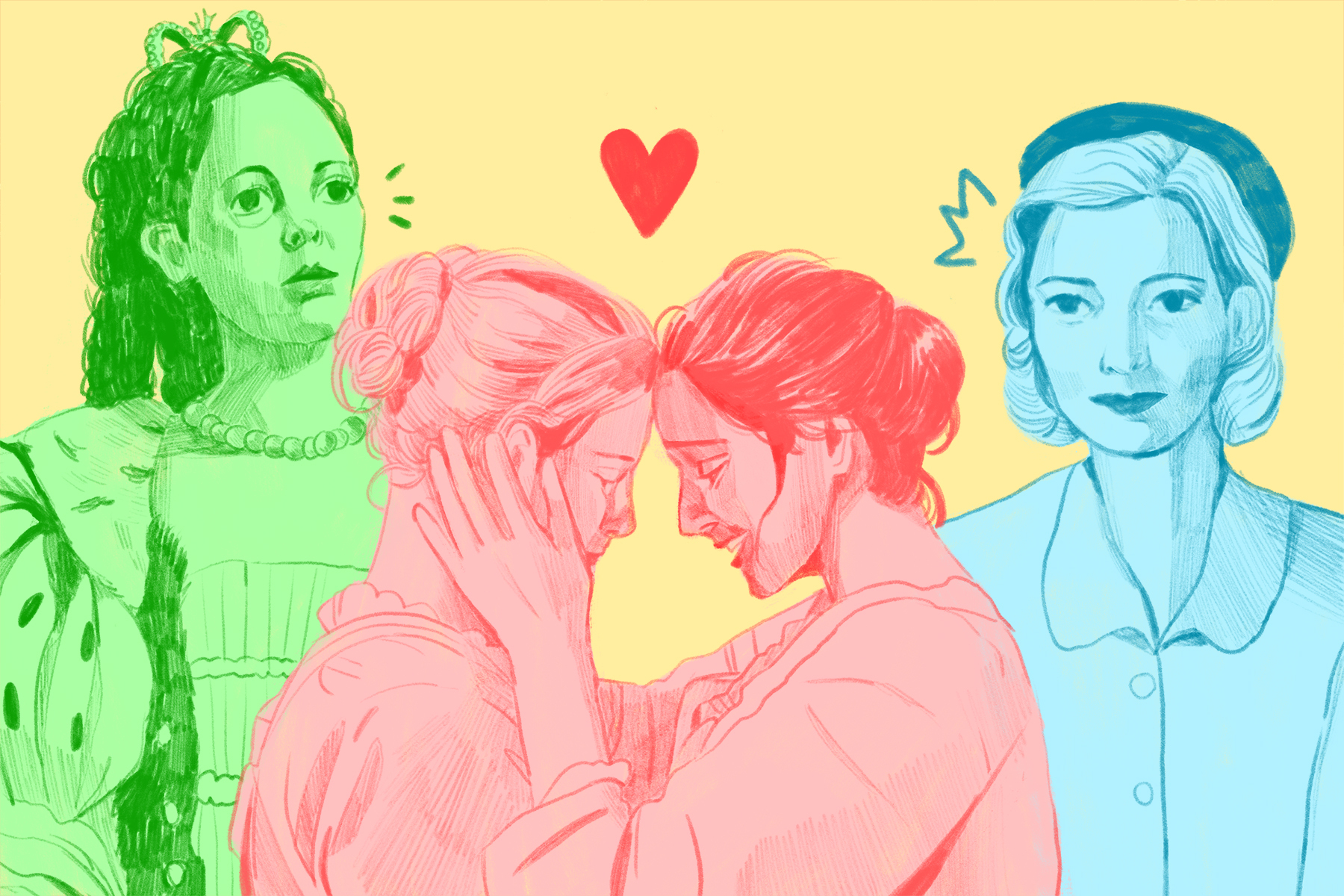“Carol” (2015), “The Favourite” (2018) and “Portrait of a Lady on Fire” (2019). All three of these films focus on lesbian love, but none of them take place in the present day. They are all period pieces.
It’s indicative of the normalization of queer culture that each of these movies featured mainstream actors and had large commercial success. “Carol,” a drama starring Rooney Mara and Cate Blanchett, is a period piece set in the 1950s. The movie traces their romance and the subsequent consequences of their forbidden affair. The movie earned five Golden Globe nominations, six Oscar nominations and nine BAFTA nominations.
“The Favourite” is a dark comedy that takes place in early 18th century Britain. Two cousins (Rachel Weisz and Emma Stone) compete for the political and sexual attention of Queen Anne (Olivia Colman). The film was also highly acclaimed, with five Golden Globe nominations, 10 Oscar nominations and 12 BAFTA nominations.
“Portrait of a Lady on Fire” stars two lesser-known French actresses, Noémie Merlant and Adèle Haenel. In late 18th century France, on the North Atlantic seaside, a painter secretly tries to paint a portrait of an aristocrat. The movie won two awards at Cannes and was nominated for many best foreign film awards.
Oddly, all three of these films are eerily similar. The obvious comparison is that they are period pieces. It’s not bad in and of itself that these films take place long ago. It’s important for people to understand that queer love is not a modern invention. Women loving women are especially in need of a queer history to look back on.
There are notable examples of historical queer women, such as the poet Sappho (her home, Lesbos, inspired the word lesbian), Virginia Woolf and Eleanor Roosevelt. In general, though, there are fewer works of art that can be looked at for female homoerotic subtext as compared to gay male relationships.
While it can be argued whether it’s homoeroticism or not, people have been reading gay male relationships in works throughout history, ranging from Shakespeare to Herman Melville’s “Moby Dick” to Arthur Conan Doyle’s “Sherlock Holmes” stories along with everything Oscar Wilde wrote. That’s because the majority of classic authors are men and focus on male emotional journeys; nuanced women and friendships between women are less common. It’s therefore important to create and study a queer female history that did exist.
However, the failure of mainstream movies to depict love between modern women indicates that queer female love is still considered too different for an audience to digest. Better to film a period piece, where it’s more easily digestible.
“Carol” and “The Favourite” feature uneven power dynamics. In “Carol,” Blanchett’s character is a wealthy, middle-aged woman, while Mara plays a shopgirl in her 20s. Mara becomes infatuated with the sophistication that Blanchett displays, while Blanchett seduces her by spending money on her. Eventually, their romance deepens to where they can consider each other equals, as Blanchett’s divorce from her husband entangles her and lowers her societal influence.
In “The Favourite,” both cousins are younger than the queen. At no point is it suggested that either cousin genuinely loves Colman’s queen; instead, they use their younger good looks to seduce the older woman and transform their sexual power over the queen into political strength in the court.
Power imbalances in romantic relationships are not uncommon. In stereotypical heterosexual relationships, the man has more control; he pays for dinner, proposes and becomes the breadwinner. Such a concept — where one person is assumed to be more dominant than another — is nonexistent in gay relationships. Yet these films find it necessary to create lopsided relationships regardless, just not in a form attributable to gender differences.
This is fine in and of itself. Using fiction to explore love versus infatuation with someone’s beauty, status or wealth can be powerful. However, as there are few films that feature lesbian romances, it’s problematic that “Carol” and “The Favourite” feature relationships with large age and wealth gaps. Young queer women looking for representation on-screen will not find a relationship they necessarily want to emulate.
“Portrait of a Lady on Fire” is different in this respect. While Marianne is a painter and Héloïse an aristocrat, their love grows in isolation from others. From the beginning, they treat each other as equals that help each other be better. The movie purposefully creates a world where all women can be equal to each other, including, eventually, Héloïse’s maid. Men are only seen on screen at the beginning and end of the film, when the relationship’s spell is nonexistent.
Another eerie similarity is that all three films feature a brunette white woman and a blonde white woman falling in love. Mainstream movies have work to do to represent any queer women who aren’t abled, stereotypically beautiful and white.
All the movies end on a bittersweet note as well, continuing the narrative that lesbian happiness is difficult. One could argue that they end with the characters apart due to the period that the films take place in. That simply means that we need lesbian movies that take place in the present day.
There’s another period piece featuring blonde and brunette women coming out Nov. 13. “Ammonite,” starring Saoirse Ronan and Kate Winslet, will hopefully feature healthy, romantic love that ends well. Either way, it’s disappointing that Hollywood studios insist on churning out lesbian-centered period pieces, but no lesbian-centered rom-coms or dramas that take place in the 21st century.

















